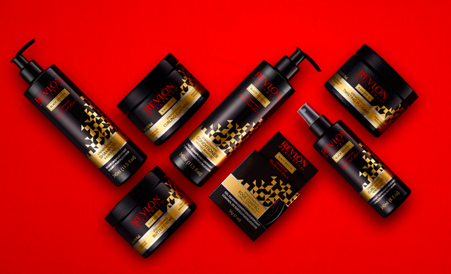Put your growth on autopilot
GrowSurf is modern referral program software that helps product and marketing teams launch an in-product customer referral program in days, not weeks. Start your free trial today.
Digitization has created many opportunities for savvy companies to reach potential customers. For example, you can speak to the masses or limit your efforts to a group sharing specific characteristics (such as buying power, location, age, or gender) known as your target market.
You can divide your target market into approachable groups or subsets based on their demographics, needs, interests, or other behaviors in a process called user segmentation.
Marketing segments not only improve the efficiency of your communication but can inform your product development cycles. Many organizations will create different products for their segments – Gillette sells razors for men and women. Toyota sells luxurious Land Cruisers to higher-income customers and produces the Yaris for entry-level buyers.
Some organizations cast their marketing net as wide as possible without differentiating between customers at all, like Target or Amazon.com. Others hone in on a single niche, like Eloquii, producing clothing exclusively for plus-sized women.
It’s important to know which strategy is right for you before launching your next marketing campaign.
There are three targeting strategies that you can adopt when promoting your business: differentiated, undifferentiated, or concentrated (also known as hyper-differentiated or niche marketing).
Differentiated Marketing is a strategy where a company decides to create separate campaigns for two or more of its target market segments or audiences.
Differentiated marketing is sometimes known as multi-segment marketing. Each segment is targeted in a specific way, highlighting benefits that appeal to that particular segment. As a result, businesses can acquire large, profitable niches in their market and improve marketing efficiencies.
Revlon is available for sale in nearly 150 countries across the globe. They produce different product lines for men and women and different age groups. A few years ago, they created a haircare range for the African American market called Revlon Realistic.

Progressive Insurance is another example of differentiated marketing. They decided to target millennials through a series of entertaining videos supposedly preventing millennials from turning into their parents.
There are several reasons why you might consider a differentiated marketing strategy:
Meeting Customer Needs: By acknowledging that customers are different and have different needs, people perceive your brand as one that cares about the needs and causes that customers care about.
A good example would be introducing recyclable packaging and promoting your company’s sustainability policies to show your eco-conscious customers that you care about the environment.
Reaching a larger audience: By differentiating, you can earn a more significant number of ideal customers. Think of the Revlon Realistic example – the company can reach a whole new range of hair care customers through differentiation.
Increasing Revenue: You can boost sales simply by speaking to the right audience.
When Old Spice noticed a slump in sales, they decided to target women with their ad campaigns. They learned that women are often the ones purchasing deodorant for men. By speaking to the purchaser directly, their sales (and their image) picked up.
Adapting Faster: Sometimes specific market segments become too competitive to be profitable. By expanding into segments that your competitors overlook, you can easily dominate that portion of the market.
Think of how quickly Progressive grew its market share by focusing on millennial homeowners. Signing up younger clients increases their lifetime value for the insurer.
Not all differentiated marketing efforts have a positive result. For example, Doritos and Bic took differentiation a step too far by introducing chip and ballpoint pen product lines for women.
Their customers quickly made it clear that they considered the idea sexist and condescending. The lesson? Don’t differentiate if your customers don’t need differentiating.
Your customers might differ, but it’s not important not to highlight those differences in an offensive or condescending manner. For instance, pricing and sizing differences between segments may be discriminatory - always proceed with sensitivity and caution.
Now that you know what NOT to do, let’s look at how to build a differentiated campaign:
1. Pick a Differentiator
Before you differentiate, decide what your strengths and unique value proposition are to your different segments. For example, eco-friendliness, flexible payment terms, and delivery methods can all be differentiators, with each one appealing to another segment.
Differentiating based on specific psychographic qualities (e.g., lifestyle, causes) puts you in the ideal position to leverage a referral program. The chances are that your customer in a specific segment has friends and relatives with a similar profile. A simple refer-a-friend email or reward program will generate valuable word-of-mouth marketing.
2. Know Who You Are Targeting
Make sure who you want to target and why. For example, some segments are more extensive but less valuable than others. Other segments are ripe opportunities because your competitors have overlooked them, making them the perfect target to convert.
Targeting is where performance marketing will come into play. Based on browsing behavior and interests, identifying key audiences online can stretch and optimize your marketing budget and reduce wasted spend.
3. Build Your Image
It’s crucial to tell a compelling story about your brand. What is your mission? How do you want to improve the lives of your target market through your product or service? Decide what image you want to put out there and keep cultivating it.
You can use differentiation to tug at the heartstrings of your consumers. For example, customers associate Nike with emotional branding. So they use images of professional athletes interspersed with examples of customers overcoming physical or emotional challenges to inspire their target audience.
John Lewis in the UK focuses on families – in their many different forms – with their highly-anticipated Christmas ads.
Differentiated marketing might not be the right fit for your company if you offer a wide range of services that is generally accessible or applicable to everyone. (Household goods like toilet paper and toothpaste, or simple fast-moving goods like chewing gum and chips are good examples!).
An undifferentiated marketing strategy (also known as mass marketing) sees the company create a single, generalized marketing campaign or message delivered to a broad audience.
Television ads and billboards usually promote feature products as part of an undifferentiated marketing campaign.
Big brands like Coca-Cola will change their commercials slightly in different geographic markets, but their messages are always generalized – Open Happiness, Enjoy the Feeling, Open to Better.

Having a celebrity endorse a product to their massive audience of followers is an excellent form of undifferentiated marketing and the use of social proof. Lay’s Potato Chips will often use sports stars to promote their brand.
Don’t assume that all companies that use undifferentiated marketing campaigns will lean on the strategy forever.
In the past, gasoline companies rarely differentiated in their campaigns (everyone with a car has to fill up!). Nowadays, some are pushing their environmental efforts, their EV charging stations, and their performance-enhancing fuels.
A well-executed undifferentiated marketing campaign has many benefits:
Broader appeal: The goal is to reach as many people as possible, which is why undifferentiated marketing campaigns build up huge audiences. Thus, increasing brand awareness, recognition, and appeal.
Richard Branson’s Virgin brand has successfully launched gyms, airlines, and cell phone networks precisely because they are well-known and well-loved as a brand.
Increased traffic: A broad reach will also increase foot traffic if your business has a bricks-and-mortar component. Many online-first retailers have opened physical retail stores following online success.
Product expansion opportunities: Big brands like Starbucks and Pepsi have become part of pop culture, and as a result, they sell a lot more than drinks. As a result, merchandise featuring the logos of popular brands is a big hit.
There are some disadvantages to undifferentiated marketing. First, the promoter is betting on a single message (and occasionally a single channel) to win over as many customers as possible.
However, this doesn’t always work out as planned. The masses see ads, and if they don’t appeal, it’s much harder to pull them back.
Think of the backlash Pepsi received with their Kendall Jenner ad. Pepsi had spent millions of dollars on production and media by the time the advert was taken off the air.

If you are launching an Undifferentiated Marketing Campaign, there are a few tips you should apply.
1. Keep Things Simple
Because you aren’t targeting a specific need, your message needs to appeal to and meet the needs of the broadest possible audience. Some messages are universal – everyone wants to look good, have fun and save money! Identify which aspects of your product appeals to most of the population and build your campaign around it.
2. Aim for High-Impact
Commercials and messages clutter mass marketing channels. You need to make sure that yours stand out and have a clear call to action. Humorous or shocking messages will resonate with audiences for years.
3. Repetition
Mass marketing works because they are high-frequency. The Got Milk? campaign launched in 1993 and is still going strong!
The third strategy is Concentrated Marketing, also known as Niche Marketing. Concentrated marketing focuses your marketing efforts on a single, well-defined segment.
This strategy is most commonly used by specialist brands, often with unique products.
The luxury brand Rolls Royce is an example of a concentrated brand. They only sell to an elite clientele, with brands like Phantom, Dawn, Ghost, and Wraith in their line-up. As a result, they only sell 3500 cars per year to a select few.

90% of their cars are specialized, and customers usually end up on a long waiting list before receiving their keys. Prospective clients also need to adhere to strict vetting and purchasing rules, including authorizing paint jobs and maintenance before proceeding.
There are several benefits associated with Concentrated Marketing, including:
Less Competition: When serving a minor or highly specialized audience, few or no competitors are out there. You can target your message to the select customers that need your product or service.
Reduced Spending: If you owned one of the few remaining fax machine repair companies or ran a sea-kayak maintenance service, chances are you won’t spend your marketing budget on pricey channels like TV and radio. A regular ad in a specialist catalog would probably reach as many if not more customers for your niche business.
Genuine Expertise: Many companies like to claim that they are experts in their field, but niche businesses are! Finding a niche business that meets your needs is like finding a needle in a haystack, so your customers will respond well to your campaigns (and probably pay a premium for your services).
Unfortunately, operating in a niche means that your growth opportunities are limited – there simply aren’t that many people that require your products and services. You will also need a specialist to identify and target your customers online.
If you are in a market specialized in outdated products (e.g., selling typewriter components or vintage camera film rolls printing), you need to plan for eventual obsolescence.
Now that you are familiar with the differences between Differentiated, Undifferentiated, and Concentrated Marketing strategies, you are ready to launch your next big campaign.
Each method has its advantages and disadvantages – and not every company gets its right.
Whichever strategy you use, do your research and determine who would benefit the most from your product or service and why. Once you know who your target is, how to target them becomes a lot easier!

GrowSurf is modern referral program software that helps product and marketing teams launch an in-product customer referral program in days, not weeks. Start your free trial today.
Did you know it's 5x cheaper to retain old customers than it is to gain new ones? In this blog, we explore 85 game-changer customer retention statistics.
Inside a winning SaaS content strategy. In this blog we cover everything you need to know about content brainstorming, scaling production and promotion.
SaaS referral programs are one of the most cost-efficient ways for startups to gain new signups and paying customers. Here's 5 reasons why and examples to study
Want more conversions from your marketing? Start using social proof today! Here are 10 examples of how you can use social proof to increase conversions.
What is performance marketing and is it right for your startup? Here's how to plan, launch and optimize your first performance marketing campaign.
Yes, refer-a-friend emails can be an effective tool in any tech startup's arsenal, but how do you craft the perfect one? Read on and find out!